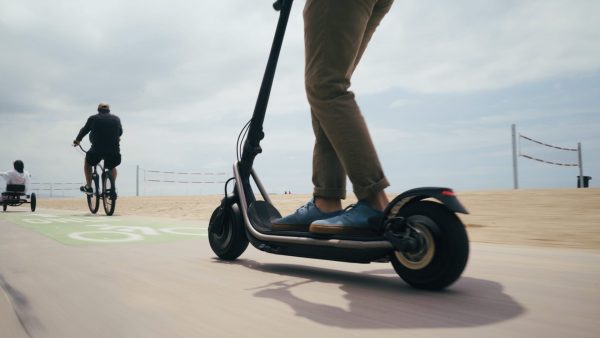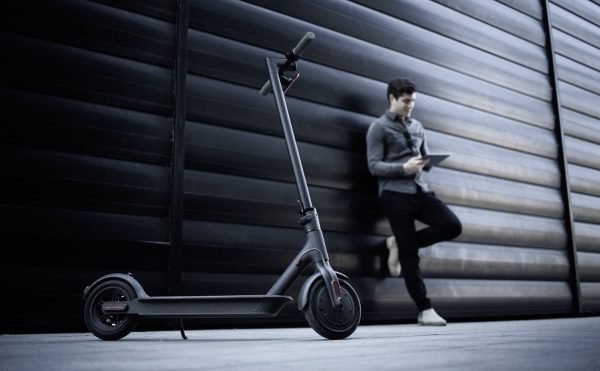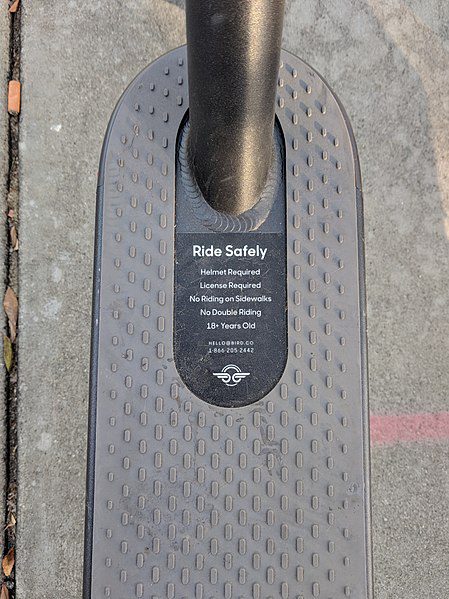In the world of scootering, whether for leisurely rides, urban commuting, or adrenaline-pumping tricks, grip is everything. A secure foothold on the two-wheeler’s deck not only ensures a thrilling and enjoyable experience but also plays a pivotal role in rider safety. This is where grip tape steps into the spotlight. Acting as a guardian of stability and control, grip tape is the unsung hero that transforms an ordinary two-wheeled vehicle into a reliable companion for every ride.

From the bustling streets to the skate parks, grip adhesive serves as a silent ally that empowers riders to push their limits with confidence. This article delves into the world of grip tape, exploring its benefits, applications, and the simple process of application. Whether you’re a seasoned enthusiast or a novice eager to take the first roll, understanding the significance of grip adhesive is crucial for unlocking the true potential of your scooter rides. Join us as we embark on a journey to uncover the secrets behind this unassuming yet indispensable accessory, discovering how it elevates both the fun and safety factors of scooter adventures.
Key Takeaways
- Grip tape enhances grip and safety during rides, providing a secure foothold on the deck.
- It is essential for maintaining control, especially when riding in wet or slippery conditions.
- Grip tape is beneficial for both casual riders and trick enthusiasts, offering improved stability for various riding styles.
- Different types of grip tape are available, including standard, coarse, fine, perforated, custom design, longevity, clear, and colored options.
- Coarse grip tape provides extra traction for challenging conditions, while fine grip tape is favored for technical tricks.
- Custom design grip tape allows personalization, adding a unique and stylish touch to your two-wheeler.
- Proper application involves cleaning the deck, cutting the grip tape to size, careful placement, smoothing out bubbles, and trimming excess.
Understanding The Importance Of Traction Tape

Grip tape, is an essential accessory for enhancing the grip and safety of scooter rides. It’s a textured adhesive material that is applied to the surface of the platform, providing a secure footing for the rider’s feet. Whether you’re a casual rider, a trick enthusiast, or someone who uses a scooter for commuting, applying grip tape can greatly enhance your riding experience.
Here are some key benefits of using grip tape:
- Improved Grip: The primary purpose of grip tape is to provide better traction for your feet on the platform. This is particularly important when you’re riding in wet or slippery conditions, as it reduces the risk of your feet sliding off the deck.
- Enhanced Safety: With improved grip comes increased safety. By preventing your feet from slipping, grip tape reduces the chances of accidents caused by loss of control or instability while riding.
- Trick Performance: For riders who enjoy performing tricks and stunts on their two-wheelers, grip tape is essential. It allows you to have better control over the vehicle during maneuvers and ensures that your feet stay firmly in place.

source: pexels.com - Comfort: Riding a two-wheeler for extended periods can cause discomfort or even pain on the soles of your feet. The added cushioning and texture of grip tape can make your rides more comfortable and reduce the impact on your feet.
- Customization: Grip tape comes in various colors, patterns, and designs, allowing you to personalize the look of your vehicle. This customization can add a unique touch to your ride and reflect your personal style.
Different Types Of Grip Tape
There are several different types of grip tape available for scooters, each designed to cater to various riding styles, preferences, and conditions. Here are some of the common types of grip tape:
- Standard Grip Tape: This is the basic and most commonly used type of grip tape. It features a gritty texture that provides excellent traction for general riding and basic tricks. Standard grip tape is suitable for riders of all levels and is often included with most scooters upon purchase.

source: commons.wikimedia.org - Coarse Grip Tape: Coarse grip tape has a more aggressive texture, providing enhanced grip even in wet or slippery conditions. It’s ideal for riders who often encounter challenging weather or terrain and need maximum traction.
- Fine Grip Tape: On the opposite end of the spectrum, fine grip tape has a smoother texture. While it offers less grip than standard or coarse grip tape, it’s often favored by riders who perform intricate technical tricks that require foot movement without too much resistance.
- Perforated Grip Tape: This type of grip tape features small perforations or holes that allow air to flow through. Perforated grip tape helps prevent air bubbles from forming during application and can result in a smoother finish.
- Custom Design Grip Tape: Some riders prefer to personalize their vehicles with custom-designed grip tape. These grip tapes come in various colors, patterns, and graphics, allowing riders to express their individuality and unique style.
- Longevity Grip Tape: Longevity grip tape is designed to withstand heavy use and last longer without significant wear. It’s a great option for riders who are particularly hard on their grip tape or for those who want to reduce the frequency of replacement.
- Clear Grip Tape: Clear grip tape is a transparent option that maintains the original design and color of the platform while still providing the benefits of improved grip. It’s a popular choice for those who want to preserve the aesthetics of their vehicle.
- Colored Grip Tape: Colored grip tape adds a pop of color to your two-wheeled platform while maintaining the essential grip properties. It’s a great way to make your vehicle stand out and match your personal style.
When selecting grip tape, consider your riding style, the terrain you’ll be riding on, and your personal preferences. Keep in mind that grip tape can wear out over time, so it’s important to inspect and replace it when necessary to ensure optimal performance and safety. Whether you’re cruising through the streets, hitting the skatepark, or performing tricks, choosing the right grip tape can significantly enhance your riding experience.
How To Apply
Applying grip tape to a two-wheeler platform is a relatively simple process:
- Prepare the Deck: Ensure that the platform is clean and free from any dirt, dust, or debris. This will help the grip tape adhere properly.
- Cut the Grip Tape: Measure and cut the grip tape to fit the dimensions of your platform. It’s recommended to use a utility knife or scissors for a clean cut.
- Peel and Apply: Remove the backing from the grip tape and carefully align it with the deck. Start by attaching one end and gradually press down the tape, smoothing out any air bubbles as you go.
- Trim Excess: Once the grip tape is applied, use a utility knife to trim off any excess tape along the edges of the deck. Be cautious while cutting to avoid damaging the tape or the deck.
- Smooth and Secure: After trimming, use a roller or your hands to firmly press down the grip tape, ensuring it adheres securely to the deck.
Remember that this adhesive can wear out over time due to regular use, especially in high-impact areas. It’s a good idea to periodically check the condition of your grip tape and replace it when necessary to maintain optimal grip and safety.
Conclusion
In the exciting world of riding scooters, where the breeze tickles your skin and each turn is a thrill, grip tape plays a vital role that you might not have noticed. As we wrap up our exploration of this special adhesive for two-wheelers’ platforms, it’s clear that this little thing can make your rides more fun and safe.
Imagine cruising on busy streets or doing cool tricks at the skatepark – grip tape is like your trusty sidekick that helps you ride confidently. It makes sure your feet stick to the surface, even when things get slippery, making your rides not only exciting but also less risky.

There are different types of grip tape to choose from, like basic ones or ones with cool designs. No matter if you’re a trick master or just love to ride around town, the right adhesive keeps you connected to your vehicle in your own way.
Before we say goodbye, remember that this adhesive is more than just an add-on; it’s something that keeps your rides great. Taking care of it and changing it when needed will keep your vehicle in top shape, so you can keep enjoying your rides without worries. So, the next time you hop on your two-wheeled vehicle, remember that this adhesive is there to make your rides awesome and safe every time you hit the road.


